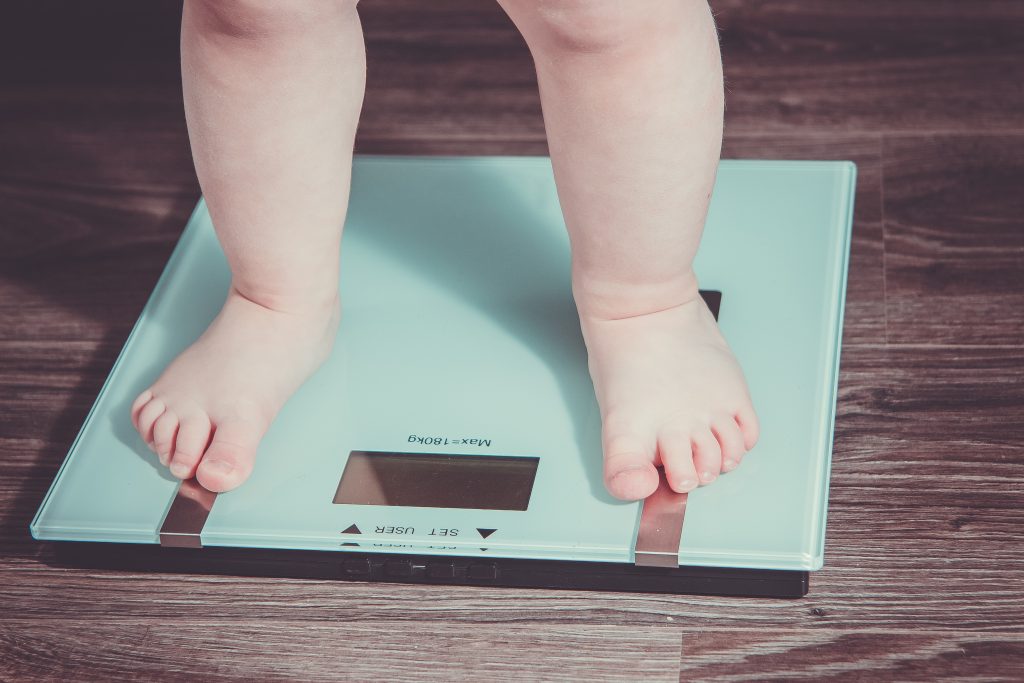
By Alex, Nick, Jonny and Calandra, IGHI’s Helix Centre.
The number of children with obesity has risen rapidly over the past 40 years.
According to data from the World Health Organization the number of overweight children increased 8-fold between 1975 and 2016, from 1% of children to 6% of girls and 8% of boys. In 2013 there were 42 million under-fives worldwide who were overweight or obese. And over a quarter of 2-15 year olds in England are estimated to be overweight or obese today. This poses a significant challenge to the safe and effective dosing of medications for children.
The ‘Goldilocks’ for medicines
When giving a medicine to a child it’s crucial to work out the right dose. Too little risks the child not receiving enough of the drug to be effective; too much risks causing harmful side effects and toxicity. For many medicines given by mouth, there’s usually a wide range of doses that are safe and basing the dose on the child’s age sometimes enough. But this isn’t the case for most medicines given directly into the bloodstream (intravenously). In these cases, a more accurate dose must be given and for most drugs, the dose is based on the child’s weight to ensure they receive the right amount of the medicine.
But for children with obesity, a dose based on their weight may be dangerous. Some medicines are not absorbed extensively by fat, which makes up a substantial proportion of their bodyweight. Therefore a dose based on the child’s total weight may result in a dangerously high concentration of medication in their bloodstream. In these cases, current practice is to prescribe on the basis of the child’s ideal body weight.
In theory, this means that we can dose the medicine on a weight that excludes the excess fat and therefore give a safe amount of the medicine to the child. However, our new research shows problems with this method.
Flaws in the systems
The ‘ideal body weight’ was created by experts in nutrition to enable the recognition of underweight and overweight children, and there are at least five different methods used to calculate it. As it’s not based on a physical definition but rather an idea of what a child “should weigh”, there is no way to say which is the most accurate. Since all of these methods might be used to calculate the right dose of a medicine for an obese child, we looked at how the five methods differed in practice.
We used data from the National Child Measurement Programme. This programme records the height and weight of all children attending state-supported schools in Reception and Year 6 in England. In the school year 2015-16, over a million children were measured, including over 120,000 children with obesity. We used this data to analyse the effect our current dosing strategy might have when prescribing medication for overweight children using their ideal body weight.
We found that the five different methods give a wide range of ideal body weights for the same child. Depending on the method chosen, the dose of medicine given could therefore vary by over 25%. A variation in the correct dose by more than a quarter may mean that some children are being given too little of the medicine, or others too much. We published these findings in JAMA Pediatrics.
Towards safer medicines
As the ideal body weight is a nutritional concept rather than being defined by drug chemistry and body metabolism, it cannot, therefore, be made more accurate. The ideal body weight was never intended to be used in this way and our data shows that its continued use will result in wide ranges of doses being given to children receiving intravenous medicines.
As the needs of the population change, we must evolve our understanding to best look after our patients. We must seek to dose medicines accurately, safely and effectively for all children, irrespective of their size. And we require new knowledge and skills to do so. The solution might be better appreciating the body composition of overweight and obese children to dose according to physically defined factors, such as lean body mass. Alternatively, we could develop technologies such as bioimpedance – which measures how much the body blocks the flow of electric currents – to better measure children.
The work represents a first step towards recognising that our current method of using the ideal body weight is inaccurate and unsafe, and we think that our data demonstrates this.
By Alex Moylan, Jonny Clark, Nick Appelbaum and Calandra Feather, from Helix Centre’s Paediatric Drug Safety Group.
Alex and Calandra are Clinical Researchers, Jonny is a Clinical Research Fellow, and Nick is a Clinical Lead at Helix.